asbestos tile/worried sick
hi, after getting 3 very high estimates for finishing our basement my dh and i have decided to clean it up ourselves and make it a run-around play area for our 2 year old daughter. After a dusty clean-up (during which our daughter was near by) we were informed that the tiles on the floor contain asbestos and the paint on the walls might contain lead as the house is 50 years old.Now I am worried sick as our toddler is exposed to this all. How long does it take for the asbestos fiber to settle? Can we ever use this basement? What are the steps we should take to make this space safe for our daughter? Thanks.
Comments (191)
glennsfc
12 years agolast modified: 9 years agoFrom your description I am guessing you have genuine linoleum tile. If the tile is at all flexible, then there is a good chance that is what it is.
Related Professionals
Dedham Flooring Contractors · Easton Flooring Contractors · Lenexa Flooring Contractors · Maltby Flooring Contractors · New Britain Flooring Contractors · Uxbridge Flooring Contractors · Princeton Carpet Dealers · Goodlettsville General Contractors · Berkeley General Contractors · Eatontown General Contractors · Nashua General Contractors · New Bern General Contractors · Norridge General Contractors · Orangevale General Contractors · Pacifica General Contractorstigerbr
12 years agolast modified: 9 years agoThanks for the input. I have read the thread and it is helpful. I would like to relay my story and hope that someone would not mind replying.
I recently became aware of the dangers of asbestos when remodeling old houses and all I can say is I wish I had known this 15 years ago. I am really having a hard time sleeping now that I have this new information and here is why:
About 10 years ago a friend of mine asked me to help him remodel a house. The house was probably built in the 1970s but I can's say for sure if it was in the early or mid or late 1970s. Bottom line is this...with no mask or protection I did the following things:1. Scraped off lots of popcorn ceiling in a large cathedral ceiling living room. The popcorn ceiling was the very rough bumpy kind with sparkles in it. Don't know if that helps to determine the manufacturer or likelihood of it containing asbestos or not but I thought I would add that. I was spraying the popcorn ceiling with water before scraping it. However sometimes it would dry up, especially when I got near the "sheet rock" or "gypsam board" of the ceiling. As a result, I often ended up having to dry scrape because it was very difficult to get the surface smooth.
2. Pryed and jackhammered tile out of the whole living room. This was arduous work because the adhesive (mastic?) under the tiles was super strong and many times I had to break tiles and driil into the adhesive and even had to drill into the slab quite a bit to get the tiles up.
Wll as you can see these actions created plenty of dust and made everything "friable" so if any of these materials contained asbestos then I sat there and breathed it in for several days.I am in a state of fear now. I know what is done is done but I am so worried about the damage I did to my body and have this feeling of doom now that I will inevitably get sick from my exposure.
The tiles that I was prying up looked like wood and they were fairly small. They gave the appearance of a wood floor and when they broke they looked like they could have actually been mader of tiny squares of wood. They were brown like wood too. My understanding is that vinyl tiles contained asbestos so I am praying these were not vinyl but I know they could have been faux wood and although had the appearance and texture of wood, could have been made of something else (maybe vinyl).
To the best of my knowledge the adhesive (mastic) underneath was a very hard glue like substance. It was not soft or gooey at all. It was super hard and very difficult to separate from the tiles and slab. I think it looked kind of light brown in color but that could have just been the residue left from the tiles I pryed off.The opinions that I am looking for hear are as follows:
1. I know popcorn ceiling manufactured in the 1970s often contained asbestos. I am praying I did not remove that kind. Does anyone know the odds of this (i.e. if the house was made in say, 1975 what percentage of popcorn ceilings contained asbestos?)
2. Does any one think they know the kind of tile I have described (looks like wood) and if so was it made of vinyl and therefore likely contained asbestos?
3. Does anyone know if the adhesives (like the one I described above)used to attached these types of tiles likely contained asbestos in the 1970s?
Whatever was in the air, I know I breathed a lot of it and I am now just trying to figure out just how much potential damage I did. Suffice it to say that if I ever do work like this again I will wear the necessary protective gear. I just fear future lung disease now that I have discovered the dangers and am at a loss why there are not public service announcements or something to warn people of this deadly hazard. That would have saved me. Thanks for any responses.
User
12 years agolast modified: 9 years agoYou must have been pretty isolated NOT to have know about the dangers of asbestos 15 years ago, but that can't be helped now. Regardless, brief exposure to asbestos should not be a big concern. You exposure was brief.
Frankly, your most obvious danger from the work you were doing was at the time you were doing it - from the dust, any kind of dust, in the air. Any time you are in a dusty environment - dust mask, preferably a hepa filter.
Any time you do any work with which you are unfamiliar, it is a good idea to do some minimal research before you start. This will allow you to make good decisions about proper safety precautions. You cannot expect a public service announcement - put forth some effort and take responsibility for your own health.
tigerbr
12 years agolast modified: 9 years agoGood advice but unfortunately I was young and naive at the time. I was aware that asbestos was bad but I was under the impression it was only in insulation and ceiling tiles in old buildings. I had no idea something like popcorn ceiling from the 1970s would contain it. I thought that was just dried plaster. I only have become aware of it because a friend of mine just recently remodeled his house and told me about it.
Don't worry I will buy everything short of a hazmat suit should I ever work on something like that again.
I didn't realize that commond dust could cause major illness either. Aggravate allergies yes, but I didn't realize it was dangerous.
Thanks for taking time to respond.
barryen
12 years agolast modified: 9 years agoWell, I really messed up big time. I am remodeling a basement and found the asbestos floor tiles underneath carpeting. Well, I knew they were asbestos, but never dreamed the tar like crap underneath them contained asbestos (why would adhesive or moisture barrier have asbestos in it...right?).
The tiles were no worry since they would just pull up with little to no effort at all. But, I had to get that nasty tar crap up so I could lay ceramic tile, right? Well, I went to the local rental store and rented a floor scraper. It was really tough going since it has to catch an edge to get the stuff up. It seemed like there may have been something else underneath the tar mastic though to create the edge that the scraper needed (I could see something white at times). In some areas, the mastic was so gummy that the scraper would not do anything. I rented a drum sander too to see if it would get some areas up that the scraper did not. Well it did in some cases, but mostly it just gummed up, so I did not use it much.
Well, needless to say, I generated a lot of dust. I did have plastic up in an attempt to contain the dust, and had a fan in a window pushing air out to try and also contain the dust and get some fresh air. I was wearing a dust mask, but I have no idea how effective it is for asbestos fibers.
About the only thing I can hope for is that 1. The scaper generated larger bits than the sander and hopefully did not generate too much dust from the mastic. 2. That the asbestos fibers don't get out of the tar compound very easily. 3. That most of the dust was from the concrete (it was that color), and 4. That my containment measures for what I thought was just harmless dust did some good.
I can say that I am worried for my kids though as surely some of that dust did get airborne and made it into the rest of the house. And...what about my air ducts now? Darn it! I doubt I will live long enough for this possible exposure to hurt me, but my kids are another matter.
pop252
11 years agolast modified: 9 years agoMy husband and I are in the process of buying a Levitt house in NJ. Our inspector said that there was possibly asbestos vinyl tiles under the carpet in the living room. At first it didn't bother me much but the more I thought about it the more worried I get. Upon further research, it turns out the the vynl is under all the floors in the house. My husband does not seem to think it is a problem because it is all sealed. I am worried that at some point in time we are going to have a problem with it and there will be a health risk involved. I am also nervous the previous owners ripped up some of the tiles before they knew it was asbestos based. Can the particles still be in the house years later? Should we back out of the deal or I am just being paranoid? We both really like the house otherwise.
Floortech
11 years agolast modified: 9 years agoIt is my opinion that you are paranoid.....but I would back out if I were you as you will never be comfortable. Good Luck!
DIYer.Guy
11 years agolast modified: 9 years agoI have a 50's house that has the entire first floor with 9x9 VAT (15% chrysotile) tiles over a slab. The tiles pop up very easy and can be removed carefully without breaking them. The black cut back adhesive has 3% asbestos.
Originally, We planned to remove tile and adhesive and grind the concrete down to prepare it for concrete stain. But after discovering the asbestos, our plan has changed. Also, the black cutback penatrates and stains the slab to the point where grinding won't remove the appearance of the tile lines completely. I call it "ghosting" And that doesn't look good with a stained concrete floor.
Now we plan to use an epoxy paint to cover the old demons....but I need it smooth and texture free first.Although we probably won't be grinding the slab now - is there a way to use solvent to remove the surface adhesive completely and safely? which product?
If not, we will have to cover with a tile product ($$$)
230263
7 years agoWe have moved into a house built around 1950 and discovered under the carpet in three reception rooms what we think was the original parquet flooring. My husband has removed all the parquet and we are now left with a black bitumen adhesive all over the concrete, it's also on the back of all the wood pieces, which we have stacked outside. The parquet had to be removed as it was broken and too costly to repair. We are planning on having laminate throughout but have been told by a professional floorer that all the old adhesive/bitumen has to come off before he can screed the floor and lay the laminate. The adhesive left behind is on top of solid concrete floors. I'm panicking as I am concerned from what I have read on the internet that this adhesive may contain asbestos. Whilst all the builders in the house think not, I am a worry wart. The flooring man is coming next week to remove this adhesive with the appropriate equipment, floor scrabbler, dust extraction machines etc. We are moving out of the property whilst he carries out the work but I am terrified that the dust he creates will put me and my family at risk? I am having sleepless nights worrying about this, especially as my husband started whacking off some of the concrete that had adhesive on with the builders pneumatic drill type thing, albeit only a small area. does anyone have any advice as to a) whether we are at risk? b) whether the adhesive is likely to contain asbestos and c) best way to remove it off the concrete? Please help?
kudzu9
7 years agoTake a sample to a certified asbestos testing lab and have it analyzed. Then make a decision about how to proceed based on the facts rather than speculation. Your local air pollution control agency, your state agency, or the Federal EPA can direct you to an appropriate lab. The cost should be under $100. I can't tell from your description if the flooring guy has the appropriate equipment to deal with asbestos without creating residual contamination.
Michael M
7 years agoYou are the homeowners. Tell your flooring guys that this project is on hold until you can test the adhesive for asbestos. Like Kudzu said, you can find a local lab pretty easily via Google or the Yellow pages. If it comes back negative, then bombs away. If it comes back positive, then no need to panic. Just have it professionally removed and move on with your life.
glennsfc
7 years agolast modified: 7 years agoIn addition to the comments thus far, I know that the mineral was incorporated into asphaltic cutback type flooring adhesives, but I don't know about the asphaltic adhesives used with wood parquet. I would be very surprised if it contains any asbestos.
aussie23
7 years agoHi, I am in New
South Wales, Australia and have found your comments very informative.
I've been trying to get information about vinyl sheet flooring (not
tiles) that would have been used here between 1965 and 1990. We have a
house that was built in 1965 and we bought it 13 years ago - we are only the
second owners.Having no money
left after purchasing the house we put off any renovating in order to eat and
educate the kids. As you do. However I had a scare two weeks ago
where I found a 1cm x 2cm bare spot at the bottom of our Tilex in the shower.
Fortunately, this is a spot that has always been wet and the entire area
is now slathered in sealant so I am feeling a bit better. It did however
encourage us to look at starting our renos and getting rid of the potential
asbestos around the house. So I started to research.Unfortunately, now
our kitchen is concerning me. The kitchen floor is covered in
6'wide sheets of continuous vinyl flooring. There are four pieces of them going
widthways across the kitchen and pantry area. We call it Lino here most
of the time though I know after my research this is not correct. Lino is
not the same, and it's the different terminologies that are used that can be
misleading.Our kitchen is
accessed by a couple of doorways, one that leads to outside. But in the
doorways, there are small patches where the vinyl flooring has torn/broken away
over the years, leaving the masonite/hardboard underneath.In the damaged
areas, there has never been any papery stuff stuck to the floor, nor is there
any black felt underneath. It's not a 'terrazzo' or stone chip design that I
have read can be bad. The vinyl itself is thin and quite stiff, but that
could be from age. Looking at it, I'd say it's late 70s early 80s. There
is no other wear other than these patches, so I would doubt it is the flooring
from 1965. And there are two layers of tiles in the bathroom, and newish
type carpet in the other living areas, so I'd say this vinyl could be the 2nd
kitchen covering. Don't want to think about what might be under that
masonite yet!If we're talking how much damage, I would say that the entire vinylled area is about 6.6m x 3m and if you put together all the spots that are broken away, it would total about a 25cm square area. These spots on the floor were already damaged when we moved in, and I've wracked my brain to try and remember how much, to establish how much extra wear has occurred in our time - but it is doing my head in. It could be that the damage incurred by us is only a few centimetres here and there.
Everything you read about asbestos says that it is relatively low risk if it is intact and undisturbed. And ours has not been. It's in traffic areas and has been walked on daily for the last 13 years. Hence my distress.
We didn't ever tape it up because like a lot of people, we had no idea of the possibility asbestos can be in your vinyl flooring (cement sheeting and the lining on fake brick get much more Press here). And it wasn't a trip hazard - it just looked a bit untidy.
I HAVE gone over and taped up everything now and I have sent a sample of the vinyl to a lab for analysis. I am thankful that I did my reading before we just barged in and gutted the place, but have we done just as much damage by leaving it as it was for so long? What has my 13 year naivety done?
Being born in 1969, there is not a house or a school I have lived in, or encountered that didn't have asbestos in one form or another. But it kills me about my family. I told my husband it felt like I'd poured each of the kids a cup of poison and watched them drink it.
I'm just wondering if anyone else has had a similar experience? Any insights?
Thanks :)
aussie23
7 years agoThanks kudzo9
I have been driving myself insane for the past couple of weeks. It's hard to put things in perspective sometimes when it's so emotional.
You break down every little action - and forget about the big picture. How many times did I sweep it, mop it, babies crawling, kids chasing each other, Nerf wars arghhhhh!!!
I just feel really stupid, but it's not a common fact here that your flooring can be hazardous.
These forums are fantastic - but there are a lot of internet sites out there, particularly some promoting their services to remove asbestos - who just seem to work on the fear factor. Makes it hard to make informed decisions. Small rant over.
I appreciate your comments and will stay positive. All the best :)
kudzu9
7 years agoYou're right...the internet is full of alarming stuff, particularly when it comes to environmental threats. I would rather have people alert to hazards and research them than for people to be blissfully unaware. I have a tendency to obsess about some things, too, so its not as if I was unsympathetic. But I'm glad you accepted my reassurances. And if you ever get around to remodeling, there are simple ways to ensure that your floors stay non-hazardous. For now, worry about something else :-).
aussie23
7 years agoHi kudzo9
Just wanted to touch base and let you know the test results for the vinyl flooring came back with white asbestos detected. Not able to get a content percentage, just that it was present.
It's very disappointing, but I admit I know it was a very slim chance it wouldn't be, considering the age of the building etc.
Although the vinyl has been damaged for quite some time, it is minimal, so I will maintain your advice that it is noise level, and continue to sleep at night.
There are many more worst case scenarios that could have occurred.
Cheers :)
kudzu9
7 years agoGood to know, but it doesn't change my advice that it is not something to worry about...
rorosie_1
7 years agoSo, I have a concern about asbestos exposure. I’ve recently read
a lot about 9x9 asbestos tile and the danger it poses with removal. Basically,
the consensus seems to be these tiles pose no real threat unless they are cracked
open, degraded, or sanded down.For the past 16 months, I have worked in a tiny office (69
square feet) at the school where I work, which has the original asbestos floor
tiling. When I moved into the office, the floor underneath the rolling metal
chair was significantly deteriorated due to the scraping of the chair over the
years. I never thought twice about it because my understanding was the asbestos
was under the tile and only releasable if the tile was cracked. However, information
I have recently read indicates that sanding or powersanding these tiles would
be especially bad, resulting in friable asbestos. I fear that the grinding of
the tile from the chair over the years exposed and released the asbestos, which
I breathed in for the past year, and which probably adhered to my personal
items and clothes. There did seem to be dust under my chair, but I always
assumed it was just regular dust accumulated over time. The janitor staff never
cleaned or washed the floors in my office. Of course, I am quite scared about
this.I only recently began to research this after reading a news
story about the renovations that will begin soon in my building, which includes
removal of the asbestos floor tile. This phrase – asbestos floor tile – changed
everything for me because I had not previously known that the tile itself contained
asbestos. I did not know about friable asbestos, or about the specific way
asbestos causes cancer. Since renovations are under way, there is no way for me
to go back to my office to verify anything.I am planning to send some personal clothing out for
testing: shoes, a jacket that fell under my chair and which I accidently
ground, etc. I don’t know how to put my mind at ease about this. Perhaps there
is no way, and I should have been wiser to these risks.kudzu9
7 years agororosie-
You're scaring yourself unnecessarily. The floor, if it was producing asbestos fibers, was not doing so in a manner that would have resulted in noticeable dust on clothes, etc. The dust you've noticed settling on things is just ordinary dust. In a situation like you describe, if any asbestos particles are actually released, they would soon float off due to natural air circulation. I'm not saying that there couldn't have been some occasional fibers that you breathed in from the floor's deterioration, but you have to take this in context: we are all breathing in asbestos fixers every day due to its unavoidable trace presence in almost all air in our environment.
I don't think you have been exposed to anything serious, and you have not been working in the hazardous waste site you are imagining. Further worrying about this or sending clothes off for testing will not be useful or productive. You'll be fine.
rorosie_1
7 years agoKudzu9,
Thank you for your informed and very timely response. I have gone from being blithely unaware of this issue to being panicky about it. Now, I will move forward feeling reassured.
BTW, I posted the very same comment to Asbestos.com, which is sponsored by the Mesothelioma Center, and they basically told me the same thing. They specifically said "not too worried about this exposure. It appears to be rather minimal."
I really appreciate your advice and comments. Thanks.
kudzu9
7 years agoGlad you feel better. It's good to be cautious, but actual threat levels are hard for the average person without a risk management background to assess. And the word "asbestos" can sometimes trigger out-of-proportion fears.
stephenmasek
7 years agoI am president of an environmental consulting corporation celebrating our 25th anniversary in a few days and am an asbestos and lead expert. For houses and apartments built 1960 to 1978, their is either little or no lead-based paint. The usage of lead in paint decreased dramatically in the 1950s, as that is when the water-based paints became good enough to start displacing the oil-based paints. Asbestos usage peaked in the 1970s, and some buildings built then have it in every major surface. Please find a good environmental consultant with proper licenses / certifications in the state where you reside. By the way, lead testing is done with X-Ray Fluorescence machines, the only proper method. Only good consultants own there expensive devices ($15,000 to $30,000), but inspections are inexpensive and produce zero damage. My company only works for large property owners and managers, but we know industry rates, and complete asbestos and lead surveys of houses should cost approximately $1,500 to $2,000.
Brian Hellrung
6 years agolast modified: 6 years agoKNOWLEDGEABLE ANSWER SOUGHT ON VINYL ASBESTOS TILE RISK LEVEL!:
Scenario: Carpeted basement of home had three floods, twice resulted in tearing out carpet installed (plus original removal of prior owners carpet) which was done by professional restoration teams (carpet removal, water vacuuming, fans drying, etc.)
With that backstory, there is what we now strongly assume to be Vinyl Asbestos tile left on the basement floor (so let's assume it is so here). Only this last time did anybody in the removal/restoration process ever mention the possibility of asbestos in the tile so we were blissfully ignorant over the years. But it was 12 by 12 inches and we were told it was highly unlikely to be asbestos, but that assertion is no longer believed true.
The problem is, over the years the tiles around the perimeter have loosened or cracked and a few bits on other tiles. (Note: They do not appear to have felt backing. The "concrete" underneath is black colored, which is assumed to be the adhesive.)
This basement has been used as an office and kid play area (toddler to pre-teens), including the past several months without carpet when we assumed it was asbestos-free. This culminated in a day-long family sorting, purging and cleaning of the area including lots of sweeping of dirt and particles (not all tile-based one assumes given the floor history but certainly the possibility of some amount).
Some what is real risk level for presumably water-degraded Vinyl Asbestos Tile that is breakable by hand--e.g., snappy but not crumbly)?!?!
As said, it's been often covered by carpet but I've spent months down there working and whole family stood around during sweeping.
Thanks in advance.
I've read many things online and cannot figure out what level of panic I should feel for myself and family. And, of course, don't want some "specialist" to charge $10,000.00 to address a possibly overinflated threat. I know the issue is friability and airborne particles, but what i wonder is weather the many floods and restoration/cleaning helped or hurt the risk level and whether the tiles i described are truly friable.
glennsfc
6 years agoRead foregoing posts... lots of good info. The short answer? ...No. Also, It does not cost a fortune to have a small piece tested. If you want to panic, that's up to you.
Ciarra C
6 years agoglennsfc-
question for you- I was helping some friends demo a kitchen in a house they just bought. Home was built in 1974. This being my first demo of any kind, didn't wear a mask of any kind. We took up a laminate flooring and there was vinyl sheet floor underneath. I was never told until after we took the laminate floor up that the stuff under most likely contained asbestos. So I took of some metal tracks by the door, which were screwed into the laminate and i'm assuming the tiles underneath. My question- did I put myself at risk for exposure by taking those nails out? Besides the nails, the vinyl floor is all intact and not coming up at all. I did sweep the floor after we got the laminate out, being that the vinyl was still in good shape it shouldn't have been a problem? I have been so worried about any kind of exposure and the health risks that come with it! we did send samples of the drywall and insulation from the soffits to be tested, but the home inspector said insulation looks like it was done within the last 20 years. Would the drywall be an issue for asbestos in a house from the 70's?
kudzu9
6 years agoNo...there's no significant risk with what you encountered. Stop worrying. You are panicing over the word "asbestos" without having the risk assessment background to analyze the situation. You're more likely to be killed by lightning than suffer any harm from what happened. There is asbestos in a huge number of houses and there are risks if you do things like sand down vinyl-asbestos floors, or dry scrape popcorn ceilings with asbestos, or remove asbestos pipe insulation with a hammer. You're not in that ballpark.
glennsfc
6 years agoI agree with the foregoing comment. Along with sanding vinyl asbestos tile (once actually recommended by the Armstrong Cork Company)...removal of glued down sheet vinyl with mineral asbestos fiber backings...and sanding that residue off...MUCH WORSE than your casual exposure...if you had any at all. Yes...professionals actually did that!
Ciarra C
6 years agoOk. Thank you. Definitely worrying over the word. And I have never lived in a house that old, so pretty much everything about it has me scared! So, with the removal of the drywall, is there risk that asbestos or other harmful things were in that?
kudzu9
6 years agoCiarra- If what you describe carried significant risk, close to 100% of the U.S. population would be dead or ill from remodeling activities. You sound like you have free-floating anxiety over unknown things that might harm you that probably aren't even an issue. Your risk from this is probably 1 in 10 million. Your risk from things you are familiar with are much higher. For example, do you ever ride in a car? The lifetime risk from dying in a car accident is 1 in 84. Dying from flu: 1 in 63. Dying from a fall: 1 in 218.
https://well.blogs.nytimes.com/2007/10/31/how-scared-should-we-be/
Everything in life has risks. Look both ways when you cross the street, don't smoke, and wear your seat belt: That will take care of a large part of it. And quit worrying about this.
jus1084
6 years agoHello,
Hoping for some clarity and next steps. My wife and I are having some renovations done and we discovered that our kitchen tile upon testing contains 1% asbestos.
Our contractor today removed the tiles in the area (250sq ft) but rather than scraping they elected to take the tile out along with the sub-floor by cutting into more manageable pieces. We informed him about the asbestos prior to and he proceeded anyways. The area was plasticed off but not too the level recommended by EPA. The large pieces of sub-floor now are in our garage awaiting removal.
what should I next step be? The area was in the kitchen which is completely demo'ed.
We are very concerned as after reading all these posts, everyone says you should be good so long as you did not cut into the tile with a saw. However that is where we find ourselves.
Clean-up? Air testing?
Thankskudzu9
6 years agoEPA doesn't define a material as asbestos-containing unless it is at least 1% asbestos. Most vinyl asbestos tile had much higher levels than this, so I'd be interested to know how you determined that it had 1%, since some asbestos analysis techniques involve visual identification of fibers, and this means that some of the fibers that get counted may not actually be asbestos fibers.
What happened wasn't the best removal practice, but it involved such a little area and with material that had such little (if any) asbestos in it that I doubt that testing could detect any elevated levels of asbestos in the air in your home. If you tested, you might get some low level reading that was comparable to background levels (i.e., the amount that is already floating around in the air from many sources), but you're not living in a Superfund site because of this. My suggestions are:
1. Wet cleanup, meaning moistened paper towels run over surfaces in the room to remove any residual dust.
2. In the future, use a contractor who is more sensitive to the person who is paying the bill.
3. Please stop worrying, as this is minor.
jus1084
6 years agoThank you for the quick response.
Upon further review the tile contained 2% based on PLM testing. Same thoughts on testing?
Should we be ceasing any additional work in the area until we can wipe down the area?
glennsfc
6 years agoIf that would make you feel any better, then yes. However, as kudzu9 said, "This is minor."
Any construction dust can be considered hazardous. Just use reasonable isolation and cleanup methods as work progresses.
kudzu9
6 years ago1% vs. 2%...they’re still small numbers. No one can tell you that 1% is completely safe, and 2% is really dangerous. Taking a moderate approach, as glennsfc suggests, is reasonable. Just don’t use a vacuum to clean up, as small particles can pass through standard filters and get back into the air.
Aida Ghattas
6 years agoAida G
My son bought a house built 1922, so it has asbestos, he hired contractors to do most of the work. They removed the floor tiles from the entire house to the wood floor. My son rented a sander machine to remove the adhesive between the tile and the wood floor. My husband and my son used the sander and they were wearing a heavy duty mask, no other protective cloth because they did not know that what they were removing was asbestos. I'm so worried about them, is the asbestos now in the air and when they move in they will be breathing it? they have a 2 year old baby which worries me more.
C Whittaker
6 years agoAnother worried mind here... we hired a floor company to lay luxury vinyl planks in our walkout basement. We knew one area had asbestos tiles (or what we assume to be since the house was built in 1967). When the company removed the carpet, it turns out the whole basement is asbestos tiles (900 sq ft). They pulled up the tacking strips from the carpet, and broke tiles pretty much the entire perimeter of the basement. Now they are just laying the new flooring right over top of broken tiles! I am freaking out since 1) I was upstairs with my kids during removal and 2) they are just covering broken tiles. My husband is “not the slightest bit worried.” Can anyone tell me if I should be concerned, or listen to my husband? Should we stop the work on the floors? Photos show damage that extends perimeter of 900 sq ft.
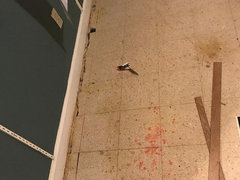
glennsfc
6 years agoAs long as they don't sand the stuff, you have nothing to worry about. If you want to spend money unnecessarily, then have it removed...that surely will put dust in the air. Nothing wrong with encapsulating existing asbestos containing flooring by installing something over it.
C Whittaker
6 years agolast modified: 6 years agoThank you, glennsfc! So it’s okay even if edges are all broken apart like this? IVe read that you can encapsulate asbestos tiles in good condition, but I’m worried about the amount of broken ones.
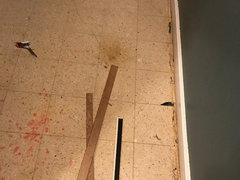
User
6 years agoThe asbestos that is dangerous is when it is in friable fibers(means airborne).
Asbestos in tile is mechanically encapsulated, meaning it has to be mechanically ground/sanded/hammered into a powder/etc. to become a hazard.
Simple breaking off a piece will most probably not create friable fibers.
You can lay pad/carpet, install underlayment, or floating flooring with no worries.
potk53
6 years agolast modified: 6 years agoSleepless nights/horribly worried
After removing a carpet, I removed approximately 250 ft.² of what would soon be determined to be vinyl asbestos tile in my basement. 2% chrysotile. The tiles came up very easily, 90 percent of them completely intact. The floor underneath was covered with black mastic, which my wife and I unfortunately vacuumed with a wet dry vac with what was probably a normal filter. I finished the basement by painting the walls. The floor was then covered with a vapor barrier and an under flooring covered by laminate. No visible dust was ever generated, we did not chip crack or disturb the mastic in anyway, other than to take up the tack from the carpeting around the perimeter. It is now a playroom for my kids i am worried about our exposure. Please advise i cant sleep
glennsfc
6 years agoDifficult not to respond with a flip answer, so I won't.
You have nothing to lose sleep over. You have more to fear when venturing out for an excursion in your automobile. Your casual exposure, if you even had any, amounts to nothing.
HU-531050465
4 years agoI am going to be taking out a backsplash that has wall glass tile in ruby red, could this contain asbetos or lead dust upon removal? The floor board was Hardibacker....what is the best advice to remove these tiles? Thank you!
kudzu9
4 years ago1. The backsplash removal is unlikely to cause problems.
2, Next time, start a new thread rather than posting an unrelated issue in an existing thread.
HU-270171222
4 years agoMy boyfriend sanded some old East German linoleum flooring from at least the 80s to remove paint and vacuumed up the dust from the floor. We weren't aware that flooring can contain asbestos and found out after the fact that this could be the case.
I ordered an asbestos test, but he’s panicking in the meantime. He wore a dust mask with a hepa filter, but he didn’t remove everything from the room before sanding the painted section, so now there’s dust on his books and some other items.
If the test comes back positive for asbestos, how bad is it for his health? Will he have to throw out all his books?kudzu9
4 years agoDo you know that it was linoleum? True linoleum does not contain asbestos. It could have been attached to the floor with asbestos-containing adhesive, but this would only be an issue if he sanded all the way through. On the other hand, seamless flooring often did contain asbestos, particularly in a backing layer under the surface, as well as in the adhesive. Here is a helpful reference on linoleum-type flooring and asbestos: https://inspectapedia.com/interiors/Linoleum_Flooring.php#LinoAsb
If the tests come back positive, the room needs to be cleaned by an asbestos remediation team that will suit up, erect containment, use positive pressure ventilation, employ HEPA vacuums and other techniques to clean up the dust, and possibly apply an encapsulant to lock down any remaining fibers. You don't need to throw out the items in the room if they are properly cleaned this way, but it could be expensive.
As far as contamination and health issues, it's good he wore a dust mask, but was it a true respirator with asbestos filter canisters, or something less sophisticated? What happened with his dusty clothes? Was the room sealed off or could dust have drifted throughout the other rooms through cracks under doors and through the ductwork in the house? No one can say what his exposure was, if any, and whether it will result in a health issue decades hence. No medical test at this point would reveal anything even if there was a significant exposure. We are all exposed to asbestos at minute, but detectable, levels every day, because there are asbestos fibers from various sources that float around in the air at a "background level." I don't think most people contract asbestos-related illnesses from just one significant exposure, but it's always wise to avoid it.
Wait for the test results. The bottom line is that you can't undo an exposure -- if it occurred -- and, even if asbestos was released, you can't really figure out what that exposure was since he was wearing some kind of protection. If the test comes back negative, you've learned an important lesson. If it comes back positive, you need to determine if more than one room is involved and get any contamination cleaned up properly and professionally. If done wrong -- like vacuuming yourself with a standard household vacuum -- it will make things worse.
P.S.: For the future, it's always better to start your own thread with a new issue like this than piggyback on a related, but somewhat different issue.
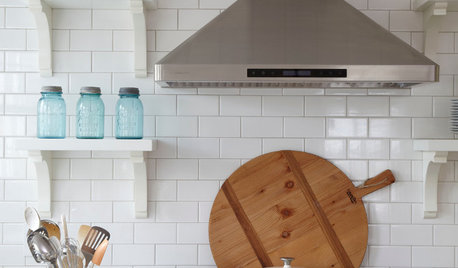
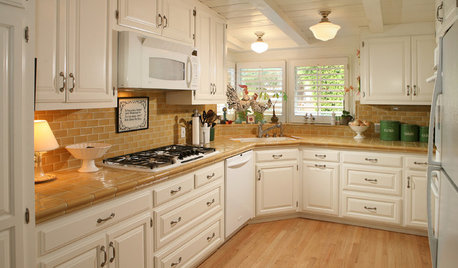
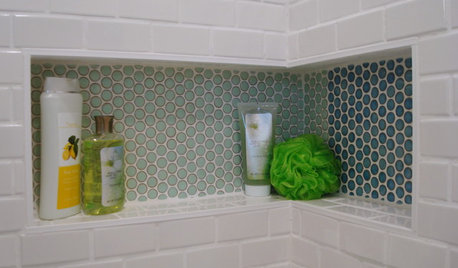

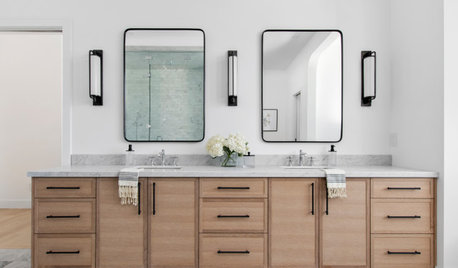
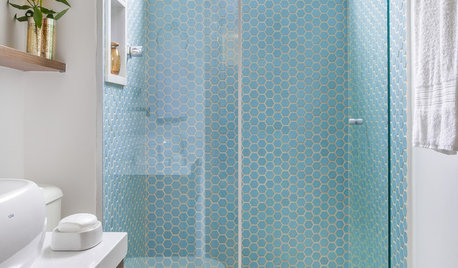
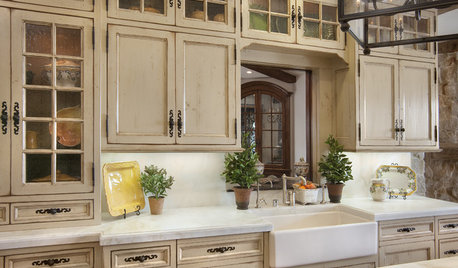
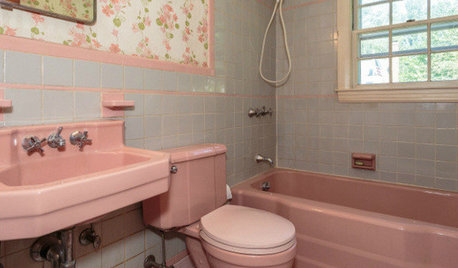
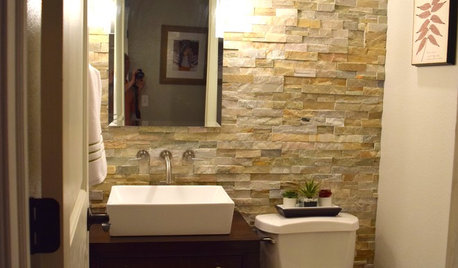






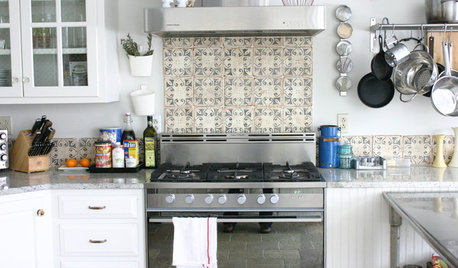
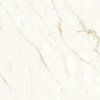

kudzu9